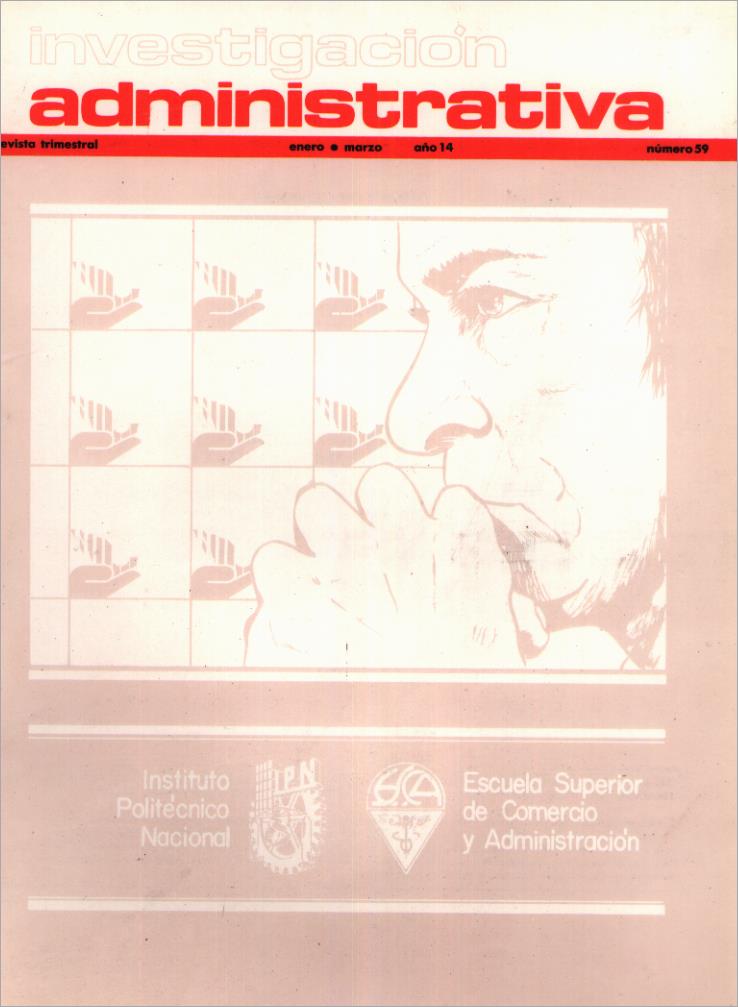Organizational management styles, employee supervisory status, and employee responses
Main Article Content
Abstract
Employees perceptions, altitudes, and behaviors are com pared in two ainomotivc supply organiza- lions that are similar in size, technology, industry, employee characteristics, and geographic locarion, bul are different in formal management styles. The data are examined separatcly for supervisors and produedon workers te identify hierarchical diíler- ences. Overall, the results indícate that rank-and- íile employecs’ perceptions, attitudes, and be ba viors are more favorable in the organization with the more democratic formal managerial style than in the more traditional organization, but there is very little difference in the responses of the super visors behveen the two envíronments. Future re search directions are suggested that would further enhance our understanding of the potential impact of managerial styles on employee responses at dif ferent hierarchical levels.
Article Details

This work is licensed under a Creative Commons Attribution-NonCommercial 4.0 International License.
References
Argvris, C. Interventíon theorv and method,
Reading, Massachusetts: Addison-Wesley, 1970.
Astley, W. G., 8c Van de Ven, A. H. Central pers pectivas and debates in organization theory. Ad ministrativo Science Quarterly, 1983,28,245-273.
Bass, B. M. Stogdill’s handbook ofieadership(Revi- sed Ed.). New York: The Fice Press, 1981.
Beehr, T. A., & Newman, J. E. Job stress, employee health, and organizational effectiveness: A facet analysis, model, and líterature review. Per son n el Psychology, 1978, 31, 665-699.
Berger, C. J., & Cunnnings, L. L. Organizational structure, att iludes, and behaviors. In B. M. Staw (Ed.), Resea rch in organiza liona! beba vior (Vol.
. Greenwich, Connecticut: JAI Press, 1979.
Bourgeois, L. J., III. Strategic management and determinista. Academy of Management Review, 1984,9,586-596.
Brief, A. P., Schuler, R. S., & Van Sell, M. Managing job stress. Boston: Little, Brown, 1981.
Drexler,J. A.,Jr. Organizational dimate: Its homo- ge ncity within organizations. Journal of Applied Psychology, 1977, 62, 38-42.
Gupta, N., & Beehr, T. A. Job stress and employee behaviors. Organizational Behaviorand Human Performance, 1979, 23, 373-387.
Hackman, J. R., 8c Oldham, G. R. Work redesign. Reading Massachusetts: Addison-Wesley, 1981.
Ingham, G. Size of industrial organizaron and wor- ker behavior. Cambridge, U. K.: Cambridge Uni- versity Press, 1970.
Ivancevich, J. M.» & Matteson, M, T. Stress and work: a managerial perspective. Glenview. Illí- noís: Scott, Foresman, Se Co., 1980.
Jenkins, G. D., Jr., & Gupta, N. The payoffs of
paying for knowledge. Nacional Productivitv Review, 1985, 4(2), 121-130.
Jenkins, G. D., Jr., Nadler, D. A., Lawler, E. E., 111, Se Caminann, C. Standardized observations: An approach to measuring nature ofjobs. Journal of Applied Psychology, 1975,60, 171-181.
Joyce, W. F., 8c Slocum J. W, Colicoli ve dimate: Agreement as a basis for defining aggregate di mates in organizations. Academy of Management JournaL 1984, 27, 721-742.
Kahn, R. E., Wolfe, I). M., Quinn, R. P., Snoek, J. D., 8c Rosenthal, R. A. Organizational stress: Studies in roleconflict andambiguity, New York: Wiley, 1964.
Kimberly, J. R. Organizational size and structura- list perspective; A review, critique, and proposaL Administrad ve Science Quarterly, 1976, 21, 571-597.
Lawler, E, E.. III. The new plant revolution. Or ganizational Dynamics, 1978, 6(3), 2-12.
Lawrence, P. R., 8c Lorsch, J. Organization anden- vironment: Managing differenliation and ínte gra tion. Homevvood, Illinois: Irwin, 1969.
Likert, R. New parteros of management. New York: McGraw-Hill, 1961.
Likert, R. Tbe human organization. New York: McGraw-Hill, 1967.
Newman, J. E. Understanding the organization structure-job attitude relationsbip through per- ceptions of the work environment. Journal of Applied Psychology, 1975, 14, 371-397.
Oldham, G. R., & Hackman, J. R. Relationsbip betwcen organizational structure and employee reactions: Comparing alternad ve framework. Administrative Science Quarterly, 1981. 26, 66-83.
Parchen, M. Some questionnaire measures oí empioyee motivation and inórale. Monograph
No. 41, Institute for Social Research, Ann Arboi Michigan, 1965.
Pe n ley, L. E., & Hawkins, B. Studying ínter perso nal communicadon in organizarons: A leader- ship association. Academy of Management Jour- nal, 1985, 28, 309-326.
Poner, L. W., & Lawler, E. E., III. Properdes of organizadonal structure in relation tojob alti tudes and job behavior. Psvchological Bulletin, 1965, 64, 23-51.
Quinn, R. P., & Shepard, L. J. The 1972-73 quality of employrnent survey. Ann Arbol, Michigan: Survey Research Center, 1974.
Rosscau. D. M. Technological differences in job characteristics, empioyee sadsfaedon and motiva- don: A synthesis ofjobdesign research and socio- technical systems theory. Organizadonal Beha vior and Human Performance. 1977, 19, 18-42.
Scott, W. G., Mítchell, T. R., & Ferry, N. S. Organí- zational governance. In P. C. Nystrom & W. H. Starbuck (Eds.). Handbook of organizadon de sign (Vol. 2). New York: Oxford UniversiLy Press, 1981, pp. 135-151.
Starbuck, W. II. Organizations and their envi- ronmcnU. In M. D. Dunnette (Ed.). Handbook of industrial and organizadonal psychoJogy, Xcw York: Wiley, 1983, pp. 1069-1123.
Steers, R. M., & Rhodes, S. R. Major influentes on empioyee attendance: A process model. Jour- nal of Applied Psychology, 1978, 63. 391-407.
Survey Research Center. Efíectivcness in work ro les: Empioyee responses lo work environments. Springfield, Virginia: National Technique In forma non Service, 1977.
Talacchi. S. Organizadonal size, individual altitudes and behavior: An empirical study. Adniinistrati- ve Science Quarterly, 1960, 44, 216-223.
Tannenbaum, A. S. Hierarchy in organizations.
San Francisco: Jossey-ttass, 1974.
Wakon, R. & Schlesinger, L. A. Do supervisor» ihrive in parücipadve work systems? Organiz.a- tional Dynamics, 1979, 7(3), 24-38.

